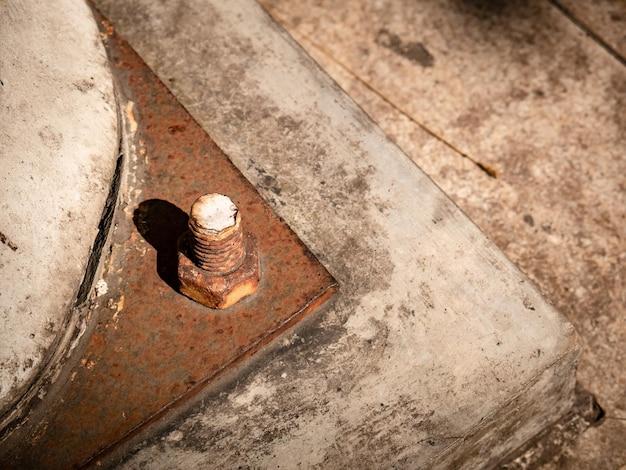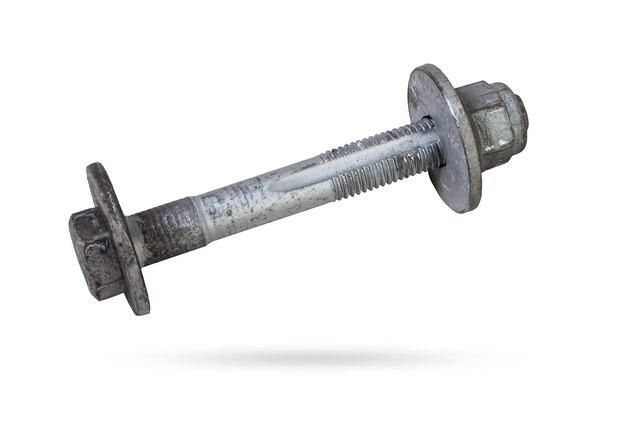Removing a broken screw from concrete can be a frustrating and challenging task for anyone, whether you’re a DIY enthusiast or a professional contractor. But fear not! In this comprehensive guide, we will walk you through the process of safely and effectively removing broken screws from concrete surfaces.
When working with concrete, it’s not uncommon for screws to break or become stuck due to various reasons like rust, corrosion, or over-tightening. But with the right tools, techniques, and a little bit of patience, you can successfully extract those stubborn screws without causing any further damage.
In this blog post, we will cover different scenarios, including removing Tapcon screws, ground anchors, masonry screws, and even rusted screws from brick. We will also provide step-by-step instructions for removing broken screws from both concrete and metal surfaces. So let’s get started and reclaim that broken screw in no time!
*Note: This blog post applies to the current year 2023 and is written with the intent to provide accurate and helpful information.
How to Remove a Stubborn Screw from Concrete
When working with concrete, encountering a broken screw can feel like a comedy of errors. But fear not! With a little know-how and a touch of humor (pun absolutely intended), you can overcome this challenge and easily remove a broken screw from concrete. In this guide, we’ll walk you through the step-by-step process.
Gathering Your Tools and Materials
Before you dive into the wizardry of screw extraction, gather your trusty arsenal of tools and materials. You’ll need:
- Safety Glasses: Protect your peepers from flying debris, because nobody wants to rock an eye patch.
- Hammer: Find a hammer that’s up to the task and give it a superhero name, like “Captain Whack-a-Screw.”
- Drill: A power drill with reverse capability will be your secret weapon.
- Drill Bits: Choose a masonry drill bit that’s slightly smaller than the screw diameter to ensure success.
- Screw Extractor Kit: Investing in a screw extractor kit is like having a Swiss Army knife for broken screws. Trust us, you’ll thank yourself later.
- Pliers: Keep a trusty pair of pliers nearby to handle any unexpected twists in the screw removal process.
Removing the Broken Screw
Now that you’re armed with the right tools, it’s time to unleash your inner screw-whisperer. Follow these steps:
Step 1: Assess the Situation
Take a moment to assess the situation and channel your inner detective. Is the screw partially or fully embedded? Knowing the extent of the screw’s shenanigans will guide your next move.
Step 2: Give It a Whack
Grab your hammer, hold it with the grip of a frustrated rockstar, and give the screw a few gentle taps to loosen it from its concrete grip. But remember, we’re going for a controlled demolition here, not a full-blown Bon Jovi concert.
Step 3: Drill, Baby, Drill
Now it’s time to introduce your drill to the party. Attach the masonry drill bit and drill a pilot hole into the broken screw. Keep a steady hand and remember, precision is key. Take that, boring screws!
Step 4: Extracting the Screw
Here comes the moment you’ve been waiting for – extracting the broken screw! Select the appropriate-sized screw extractor from your kit and insert it into the pilot hole you just drilled. Apply gentle pressure and turn it counterclockwise. With a touch of luck and a sprinkle of magic, the screw will start to waltz out of its concrete entanglement.
Step 5: Show Who’s Boss
Sometimes, even the most stubborn screws need a reminder of who’s in charge. If the screw is being extra stubborn, grab your pliers and give it a firm but gentle grip. Twist counterclockwise with all your might (but not too much, we don’t want any superhero injuries), and watch that screw back down.
Celebrate Your Triumph!
Congratulations, my fellow concrete conqueror! You’ve successfully removed a broken screw from concrete. Take a moment to revel in your victory before moving on to the next home improvement challenge. Remember, with a little knowledge, humor, and the right tools, there’s no screw too stubborn for you to handle. So go forth, embrace your inner handy-person, and save the day, one screw at a time!
Disclaimer: The content provided in this article is for informational purposes only. We are not responsible for any DIY mishaps or accidental superhero alter ego awakenings that may occur. Always exercise caution when working with tools and materials, and if unsure, seek professional assistance.
FAQ: How To Remove a Broken Screw from Concrete
In this comprehensive FAQ-style guide, we will explore various methods and techniques to help you remove a broken screw from concrete. Whether you’ve encountered a stubborn Tapcon screw, a rusted screw in brick, or a broken masonry screw, we’ve got you covered! So, let’s dive in and find out how to tackle this pesky problem.
Can You Remove Tapcon Screws
Absolutely! Tapcon screws are commonly used in concrete applications, but they can be removed with the right approach. Here’s what you can do:
-
Check the condition of the screw: Ensure that the screw is intact and not completely rusted or damaged. If it’s in good shape, proceed to the next steps.
-
Use a rotary hammer: Attach a suitable drill bit to your rotary hammer and carefully drill into the Tapcon screw. Apply steady pressure while drilling to avoid damaging the concrete. Once the screw starts to loosen, switch to a screwdriver bit and remove it.
How Do I Get Rid of Ground Anchors
Removing ground anchors from concrete can be a challenge, but with the right technique, you’ll have them out in no time. Let’s get started:
-
Expose the anchor: Clear away any dirt or debris surrounding the ground anchor to gain better access.
-
Apply heat: Use a blowtorch to heat the exposed part of the anchor. Heating will cause the metal to expand, making it easier to loosen the anchor.
-
Grip and unscrew: Once the anchor is heated, use a wrench or pliers to grip the anchor firmly. Rotate it counterclockwise to unscrew it from the concrete.
Can Masonry Anchors Be Removed
Definitely! Masonry anchors are designed to provide a strong hold, but they can still be removed. Follow these steps:
-
Drill pilot holes: Use a masonry drill bit to create a pilot hole in the center of the anchor. Start with a small bit and gradually increase the size until the hole matches the diameter of the anchor.
-
Apply pressure and rotate: Insert a screwdriver or a drill bit into the pilot hole and rotate it counterclockwise while applying downward pressure. Continue turning until the anchor comes loose from the concrete.
How Do You Remove a Rusted Screw from Brick
Dealing with a rusted screw in brick can be frustrating, but fear not! We have a solution:
-
Spray with penetrating oil: Apply a generous amount of penetrating oil, such as WD-40, to the rusted screw. Let it sit for a few minutes to penetrate the rust.
-
Grip and turn: Using a pair of pliers or a wrench, grip the screw tightly and try to turn it counterclockwise. The lubricated oil should help break the rust bond, making it easier to remove the screw.
How Do You Get a Broken Screw Out of Concrete
When a screw breaks off in concrete, it’s time to employ some resourceful techniques. Here’s what you can do:
-
Extract with pliers: Use a pair of locking pliers to grip the broken end of the screw. Apply steady pressure and rotate counterclockwise to remove it from the concrete.
-
Drill and remove: If the broken screw is flush with the surface, drill a small hole into its center using a drill bit suitable for concrete. Then, insert a screw extractor into the hole and turn it counterclockwise to remove the screw.
How Do You Get a Small Broken Screw Out of Metal
Even a small broken screw stuck in metal can give you a hard time. Try these methods to overcome this challenge:
-
Thread a rubber band: Place a wide rubber band over the broken screw. Press it firmly into the screwhead, allowing it to fill in the gaps. Now, use a screwdriver to remove the screw by turning it counterclockwise.
-
Super glue trick: Dab a small amount of super glue onto the tip of a toothpick or a similar small object. Carefully insert the toothpick into the broken screw, let the glue bond, and then twist counterclockwise to remove the screw.
How Do I Get Rid of Anchor in Word
Oops! It seems like we have a little mix-up here. If you’re looking to remove an anchor in Microsoft Word, follow these steps:
-
Select the anchor: Click on the object or text with the anchor symbol. The anchor will become visible.
-
Delete the anchor: Right-click on the anchor and select “Delete” or press the “Delete” key on your keyboard. The anchor and its associated object or text will be removed.
How Do You Drill Out Tapcons
Drilling out Tapcons can be a useful technique when other methods fail. Here’s what you need to do:
-
Choose the right drill bit: Select a drill bit specifically designed for drilling into concrete or masonry. The size of the bit should match the diameter of the Tapcon screw.
-
Drill through the screw: Carefully drill into the center of the Tapcon screw, applying steady pressure to penetrate the metal. Once the screw is drilled through, remove it from the hole.
How Do You Remove a Broken Screw Without an Extractor
Don’t fret if you don’t have a screw extractor on hand. Try this alternative approach:
-
Use a drill bit: Choose a drill bit slightly smaller than the diameter of the broken screw. Carefully drill into the center of the broken screw, ensuring not to drill too deep and damage the surrounding material.
-
Reverse the drill: Switch the drill into reverse mode and continue drilling. As the drill moves counterclockwise, it should catch on the broken screw and unscrew it from the material.
How Do You Remove a Broken Masonry Screw
Dealing with a broken masonry screw can be tricky, but you can tackle it with the following steps:
-
Drill a pilot hole: Select a masonry drill bit slightly smaller than the diameter of the broken screw. Create a pilot hole in the center of the broken screw, going deep enough to accommodate a screw extractor.
-
Use a screw extractor: Insert a screw extractor into the pilot hole. Turn it counterclockwise using a wrench or pliers. The screw extractor will create torque, removing the broken screw from the masonry.
These are just some of the frequently asked questions related to removing broken screws from concrete. With the right techniques and a little patience, you’ll be able to free your projects from the clutches of broken screws. Remember, practice safety precautions and always wear appropriate protective gear when working with tools.
Now that you’re armed with this knowledge, go forth and conquer those frustrating broken screws!

